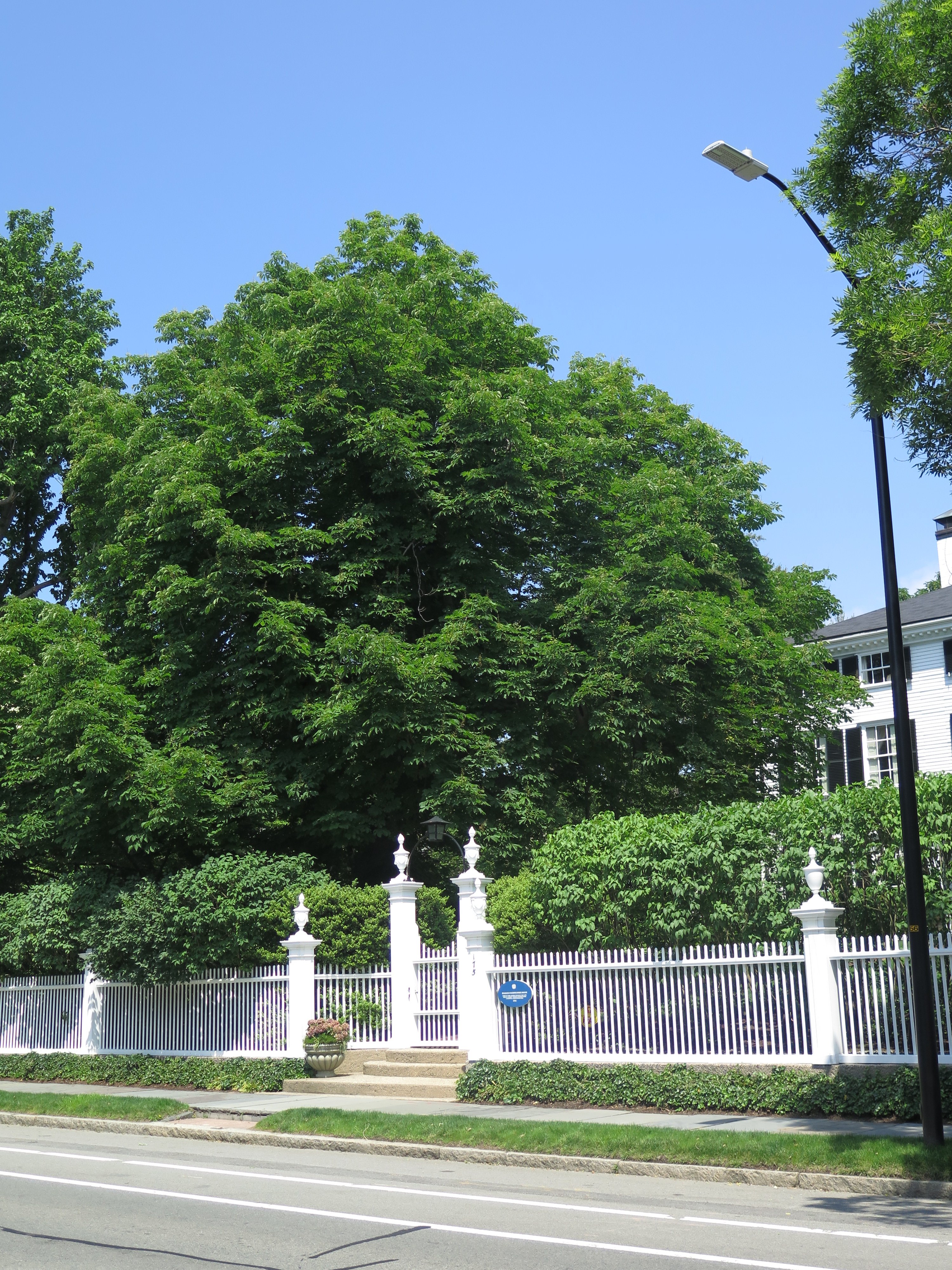Chestnut Trees in Cambridge by Jason Weksner, Arborist

American chestnut trees (Castanea dentata) have all but vanished from Massachusetts landscapes, thanks to the fungal pathogen Cryphonectria parasitica, commonly known as chestnut blight. The lovely horse chestnut (Aesculus hippocastanum) from Europe, although a different genus from our native chestnut tree, has now established itself in the local landscape. While smaller than the American chestnut, the horse chestnut has beautiful, showy blossoms; coarse, palmately compound leaves, pendulous branching structure; and rough, flaky bark – unique qualities that provide visual interest across all seasons. Wonderful examples are present throughout Cambridge, including the specimen comfortably ensconced at the left-front corner of the property that includes the Ruggles-Fayerweather House at 175 Brattle Street.
In today’s landscape, the rare occurrence of the American chestnut highlights the flaw in taking for granted our everyday surroundings. It also reveals the fleeting nature of life in general, and the struggle to survive that is shared by all species. This is a reminder that exploring our history enables us to view changes in all landscapes – cultural, ideological and physical, so that we can gain a deeper understanding of our past.
